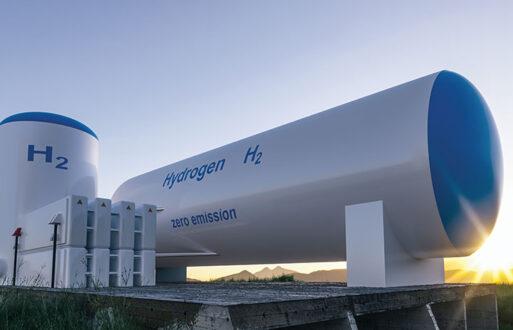Disclaimer: This blog post, which answers “How does CAISO determine start-up costs and minimum load costs for gas-powered peaker plants?,” was generated using PCI’s ISO/RTO Documentation AI Chatbot, powered by ChatGPT. While the content is based on curated market documentation, it is intended for informational purposes only and may not reflect the most up-to-date or comprehensive information. We recommend verifying any key details directly with relevant sources before making business decisions.
For the latest answer to this question, generated live, visit our free ISO/RTO Documentation Chatbot.
Gas-powered peaker plants play a critical role in maintaining grid reliability, especially during peak demand periods. But how does CAISO determine the start-up costs and minimum load costs for these plants, and how are these costs factored into bidding and cost recovery? Understanding these processes is essential for market participants navigating CAISO’s energy markets.
In this blog post, we’ll explore how CAISO calculates start-up and minimum load costs for gas-powered peaker plants, how these costs influence bid prices, and the rules governing cost recovery. We’ll also dive into the bidding requirements that ensure transparency and fairness in the market.
ISO/RTO Documentation Chatbot
Use our AI to search Business Practice Manuals from ISO/RTO markets at no cost.
How CAISO calculates start-up and minimum load costs
CAISO uses a detailed methodology to calculate start-up and minimum load costs for gas-powered peaker plants. These costs are essential for ensuring that generators recover their operational expenses while maintaining competitive market dynamics.
Start-up costs represent the expenses incurred by a generating unit from the moment it begins operation (e.g., first fire or receipt of a dispatch instruction) until it reaches its minimum load. These costs include fuel consumption, variable operations and maintenance (O&M), and greenhouse gas (GHG) compliance costs if applicable. For gas-fired resources, CAISO calculates these costs using the unit’s registered emission rate, start-up fuel requirements (measured in MMBTU/start-up), and projected gas prices. Additionally, CAISO may include a variable O&M adder and a GHG allowance cost if the resource is subject to compliance obligations.
Minimum load costs, on the other hand, cover the expenses of operating a unit at its minimum load level. These costs are calculated using the unit’s minimum load heat rate, projected gas prices, and variable O&M costs. If the unit is subject to GHG compliance, CAISO adds the GHG allowance cost to the calculation.
How these costs are factored into bid prices
CAISO integrates start-up and minimum load costs into the bidding process to ensure that generators can recover their costs while maintaining market efficiency. Generators submit these costs as part of their bids in the Day-Ahead Market (DAM) or Real-Time Market (RTM).
For gas-powered peaker plants, CAISO allows Scheduling Coordinators to submit start-up and minimum load bids daily. These bids must comply with CAISO’s rules, such as being strictly non-negative and following a monotonically increasing staircase curve for start-up costs. The bids are validated against the Proxy Cost or Registered Cost methodologies to ensure accuracy and fairness.
If a resource receives a financially binding award in the DAM or a binding start-up instruction in the Residual Unit Commitment (RUC) process, its RTM bids for the same trade hour won’t be used. This ensures that the market operates efficiently and avoids double-counting costs.
Cost recovery rules for start-up and minimum load costs
CAISO has robust cost recovery mechanisms to ensure that generators are compensated for their start-up and minimum load costs. These costs are included in the Bid Cost Recovery (BCR) mechanism, which compensates resources for any shortfall between their market revenues and their bid costs.
For gas-powered peaker plants, CAISO allows Scheduling Coordinators to request additional uplift payments to cover actual fuel costs or fuel-equivalent costs associated with start-up and minimum load bids. These requests are subject to validation and must align with CAISO’s rules for cost recovery.
Bidding requirements for gas-powered peaker plants
CAISO imposes specific bidding requirements to ensure transparency and fairness. For instance, start-up and minimum load bids must adhere to the Proxy Cost or Registered Cost methodologies. The Proxy Cost methodology uses standardized calculations, while the Registered Cost methodology allows generators to register their specific cost values, subject to caps and validation.
Additionally, CAISO requires that bids for gas-powered peaker plants include all relevant cost components, such as GHG compliance costs and variable O&M adders. This ensures that bids reflect the true cost of operation and maintain a level playing field for all market participants.
Why understanding these costs matters
Understanding how CAISO determines and integrates start-up and minimum load costs is crucial for market participants. These costs not only influence bidding strategies but also impact cost recovery and market dynamics. By adhering to CAISO’s rules and methodologies, generators can ensure they’re fairly compensated while contributing to a reliable and efficient energy market.
For more detailed guidance, CAISO’s Business Practice Manuals (BPMs) and tariff documents provide comprehensive information on these processes.
For the latest answer to this question, generated live, visit our free ISO/RTO Documentation Chatbot.







